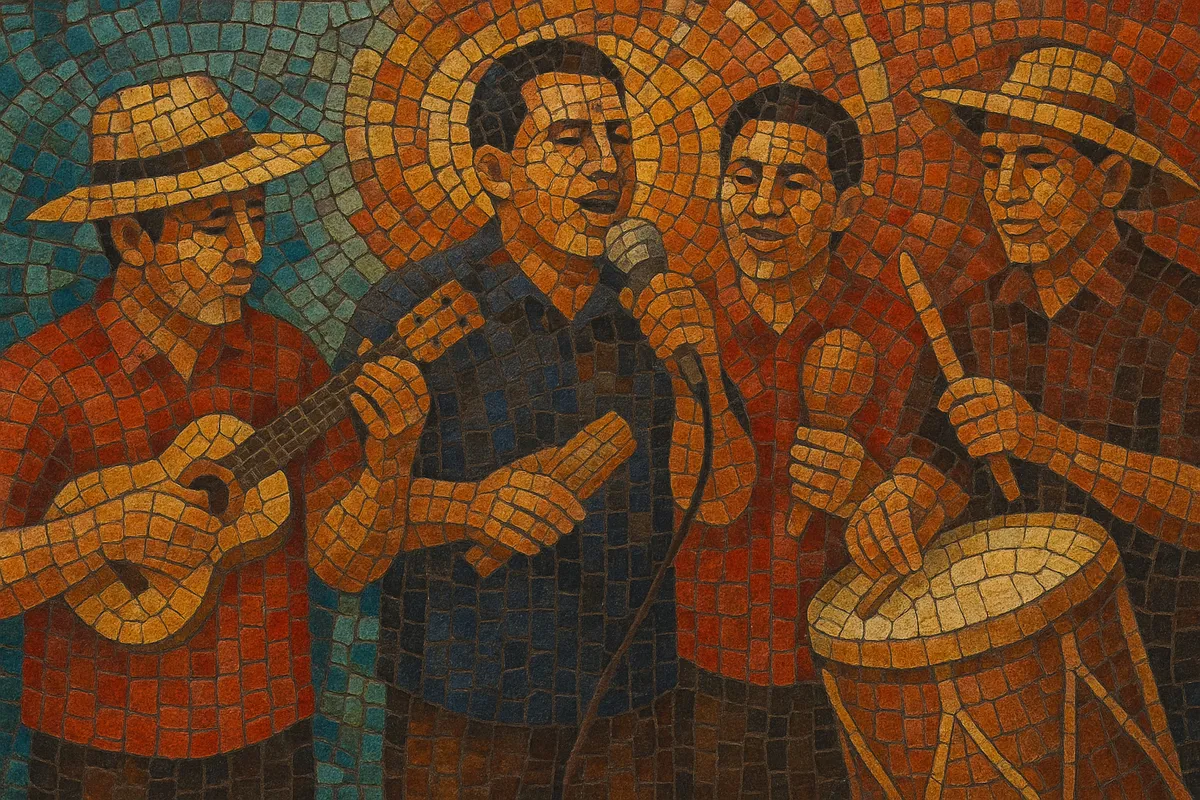Gaita zuliana is a festive folk-pop music from the state of Zulia in western Venezuela, closely associated with the Christmas season and community celebrations called gaitazos. It features a distinctive ensemble built around the furro (furruco) friction drum, tambora (barrel drum), charrasca (guiro), maracas, and the cuatro, with call-and-response vocals between a lead singer and a chorus.
The groove typically sits in a lively ternary feel (often 6/8), with syncopated percussion patterns, bright strummed cuatro, and melodic, slogan-like choruses that invite audience participation. Lyrics balance humor, local pride, devotional themes, and social commentary, making the genre both celebratory and reflective of Zulian identity. Since the 1970s, many bands have incorporated bass, keyboards, and brass arrangements, bringing gaita into dialogue with salsa and pop while preserving its core percussion and coro-led song forms.
Gaita zuliana traces its roots to 19th-century Zulia, where community gatherings, religious festivities, and street parrandas shaped its repertoire. Early gaitas were sung to accompany seasonal processions and neighborhood celebrations, combining Spanish devotional song (villancico) practices with Afro-Venezuelan percussion and the cuatro.
The mid-20th century brought radio and recording opportunities that standardized instrumentation around furro, tambora, charrasca, maracas, and cuatro, with a lead vocalist and responsive chorus. By the 1960s, gaita had crystallized as a recognizable national style. Ricardo Aguirre’s anthemic "La Grey Zuliana" (1968) highlighted the genre’s capacity for civic and social commentary, while groups like Cardenales del Éxito and Rincón Morales popularized the sound across Venezuela.
Large ensembles began adding electric bass, keyboards, and sometimes brass sections, creating fuller arrangements suited to dance halls and mass media. Bands such as Guaco and Maracaibo 15 explored crossover textures with salsa, funk, and pop, expanding harmonic palettes and production values while retaining gaita’s percussion-driven identity. Annual gaitazos became major cultural events that marked the start of the holiday season.
Venezuelan migration dispersed gaita communities globally, establishing ensembles in the Americas and Europe and sustaining holiday traditions abroad. Today, the genre coexists in traditional and modern forms: some groups foreground the classic furro-tambora groove and devotional repertoire, while others incorporate contemporary pop aesthetics, digital production, and expansive stage shows.


